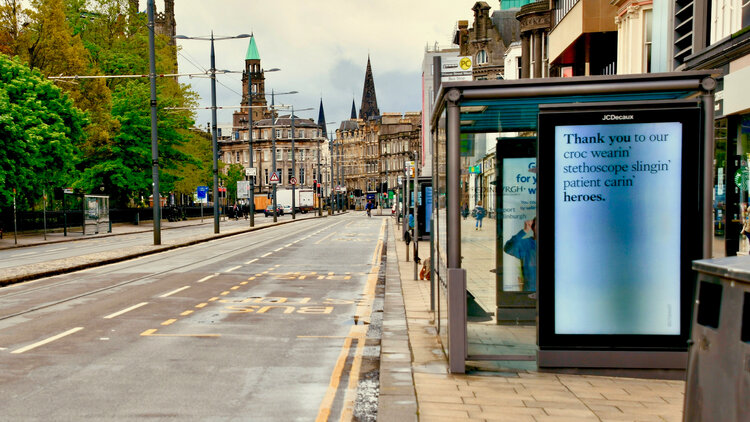
2 minute read | July 16, 2020
Programmatic OOH offers the flexibility advertisers need as we emerge from lockdown
Written By: Gavin Wilson
As countries take steps out of Covid-imposed lockdowns, the uncertainty around a second wave with a return to stricter rules, and the potential for a global recession, is ever present. But with the need for businesses to drive revenue as quickly and efficiently as possible, how do brands navigate this uncertainty when it comes to planning their media campaigns?
There have been numerous studies including from Ipsos which show that “brands that maintain a level of media continuity during recessionary times tend to gain share of voice and market share….in many of those cases, an increase in share of voice often leads to category leadership and growth in revenue and profits in the recovery period”.
Programmatic OOH provides a unique opportunity for advertisers to take advantage of a brand-safe, high impact, premium channel for top-of-funnel advertising which can also deliver against lower-funnel performance drivers, in particular when planned and optimised in conjunction with mobile. Brands are able to leverage the affinity of mobile and digital OOH through geotargeting, movement tracking, retargeting & sequential messaging, allowing for truly holistic targeting and cross-channel optimisation. Research shows that the impact of mobile advertising is amplified by up to 17% when audiences are exposed to a brand’s OOH campaign, and DOOH combined with mobile also has the ability to drive in-store visits and app downloads.
The flexibility of programmatic also means that brands are able to pause or adjust their OOH creative mid-campaign, optimising to drive higher campaign performance and focusing spend on locations and creative executions that are delivering. GlaxoSmithKline recently ran a campaign for anti-histamine medication Piriteze in the UK with VIOOH on a non-guaranteed basis that utilised pollen levels as the trigger for activation. Once the pollen levels dropped in early July, GSK was able to stop the campaign and recoup unspent media budget, showing the efficiencies of programmatic that would not have been so easily possible with traditional ways of buying OOH.
Brands are also able to react to ever-changing conditions with trigger-based targeting around promotions, news, audiences and consumer journeys, locations, weather and environmental conditions, time and moments. In Belgium, the VIOOH platform enabled a campaign for Renault Zoe (Renault’s compact electric car) that utilised air quality data as the trigger, enabling the executions to only be shown on digital screens when the air quality reading from the nearest weather station was poor. The campaign also had three different versions of the creative that could be displayed, depending on the severity of the pollution.
With the current pressure on brands, the flexibility that programmatic OOH allows for brands to pause, adjust, restart and optimise campaigns mid-flight enables efficiencies in media spend and optimised ROI that would be difficult to achieve otherwise. Whilst no-one would wish for a scenario like COVID-19, given the impact on lives globally, perhaps this an unexpected opportunity for brands to accelerate their adoption of programmatic OOH?
Other posts you might be interested in
View All PostsSign up to receive our newsletter
Stay in the loop and find out what's happening in the world of digital OOH.
